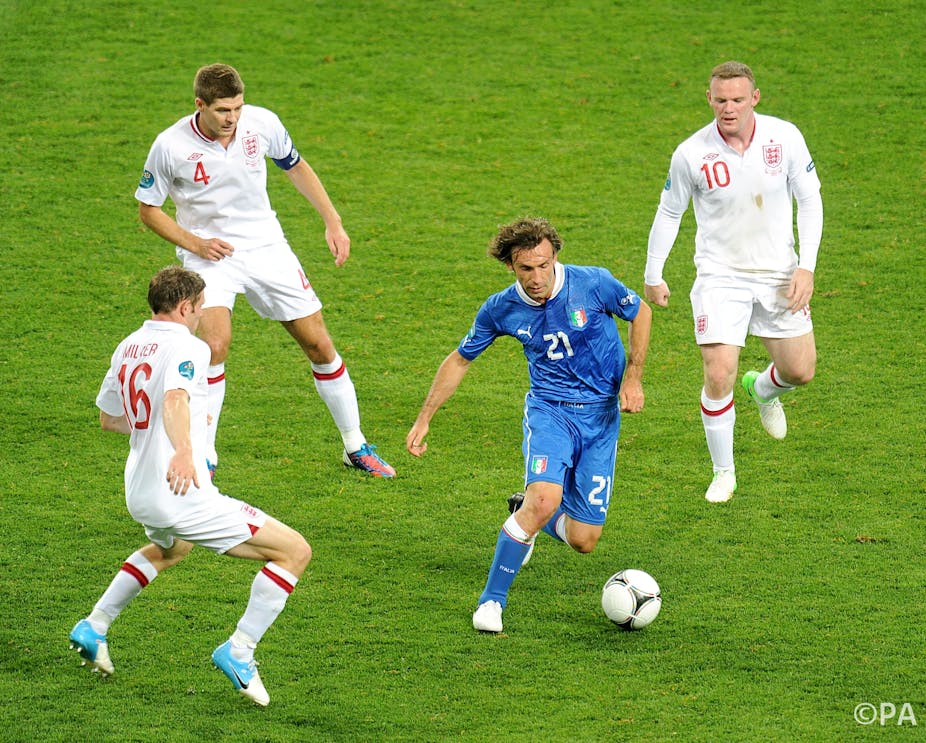No matter who’s playing, the first game of a World Cup is always special – full of excitement, anticipation and hope for tournament filled with skills, goals and drama. This time, hosts Brazil take on a solid Croatian side in Sao Paulo, in a match suited to Brazilian flair and, most importantly, a glut of goals. Around 20 hours later, Mexico and Cameroon will jog out onto the pitch 1,400 miles north in Natal to begin their warm-up.
Despite the momentum created by the opening fixture, this game has the potential to be a flop – not because of the quality of the two teams but because of when and where they’re playing.
It’s winter in the southern hemisphere, but for those playing in northern Brazil it will feel like an extraordinarily hot summer. This has led some groups to claim that kick-offs in midday heat would place players’ health at risk. But are the environmental conditions really that extreme and, if so, how will this affect the players and the quality of the games?
Measuring heat stress
We measure how thermally stressful an environment is by using an index called the wet-bulb globe temperature (WBGT). Using historical weather data it’s possible to estimate the WBGT for each of the host cities in the World Cup during June. Venues in the north of Brazil or those with tropical climates are most likely to have high WBGTs – Manaus, Fortaleza, Natal, Recife and Cuiaba. FIFA claims they have moved “high risk” games to later in the day, but there are at least four seemingly high-risk fixtures that all begin at midday, exposing players, officials and spectators to high heat and humidity.
One such game is the Mexico-Cameroon game in Natal. Historical weather data suggests this fixture will begin at a WBGT of around 31˚C – above FIFA's "high risk" cut off of 29.4°C, and at the temperature required to schedule cooling and drinks breaks throughout the game. Even games that have been scheduled later in the day, such as England’s fixture with Italy in Manaus might have a kick-off temperature around 32°C WBGT.
Six years ago, in the men's 2008 Beijing Olympic football final, FIFA allowed drink breaks in similar conditions, and the organisation has said it is open to two-minute time-outs for players to take on fluid. But slightly lower air temperature, more cloud cover and lower humidity can influence hour-to-hour WBGT, somewhat justifying FIFA’s approach to making decisions on a match-by-match basis.
Most fixtures will take place in the cooler climates of the mid- and southern regions of the country. Even so, when playing in a WBGT of 25˚C it is important to monitor the sweat rate and fluid intake of individual players and experts recommend regular fluid breaks in WBGT higher than 30˚C.
But what if temperatures did reach those limits required for drinks breaks and is there a risk to players’ health? Would the inclusion of a two-minute drink break have any meaningful effect?
One recent study compared the effects of playing football in 32°C WBGT to 21°C WBGT (think Manaus versus Porto Alegre).
In the hotter game:
- Players reached core temperatures of more than 39°C
- They ran less distance at high intensity running speeds
- Top sprinting speed was not impaired
- Players sweat one litre per hour more in hot games resulting in a 2% loss in body mass
Performance adaptation
Interestingly, match statistics revealed a greater number of successful passes, greater time in possession of the ball and less contact-challenges in the hot game. This suggests that players chose to play the game at a slower pace and carefully selected when they performed high intensity actions so their sprinting speed was maintained. Even though their body temperature was high, players paced their efforts to prevent themselves from overheating.
Importantly, players were allowed to drink water whenever there were breaks in play – this probably allowed players to limit losses in body water content. On average, players ingested around 2.5 litres of fluid over the duration of the game. But this would be difficult to achieve if players were restricted to only a two-minute drinks break in each half.
There are some leaps to make between the study and a competitive match being played in hot and humid conditions. It’s likely, however, that teams who are well-adapted to the heat, have better fitness, greater tactical proficiency and are effective counter-attackers, will perform better. If it’s hot, industrious teams like Cameroon and Germany, who have games in Natal and Recife, will have to adapt their playing style, potentially disrupting their performance.
But we might expect strong performances from Italy against England and Uruguay in hot conditions, especially if the composed Andreas Pirlo is allowed to pull the strings in midfield. Generally, players will cope with the heat but at the expense of performance, so if you’re sitting down to watch a game played in the north of Brazil, don’t expect end-to-end drama that has been the characteristic of past World Cups.

